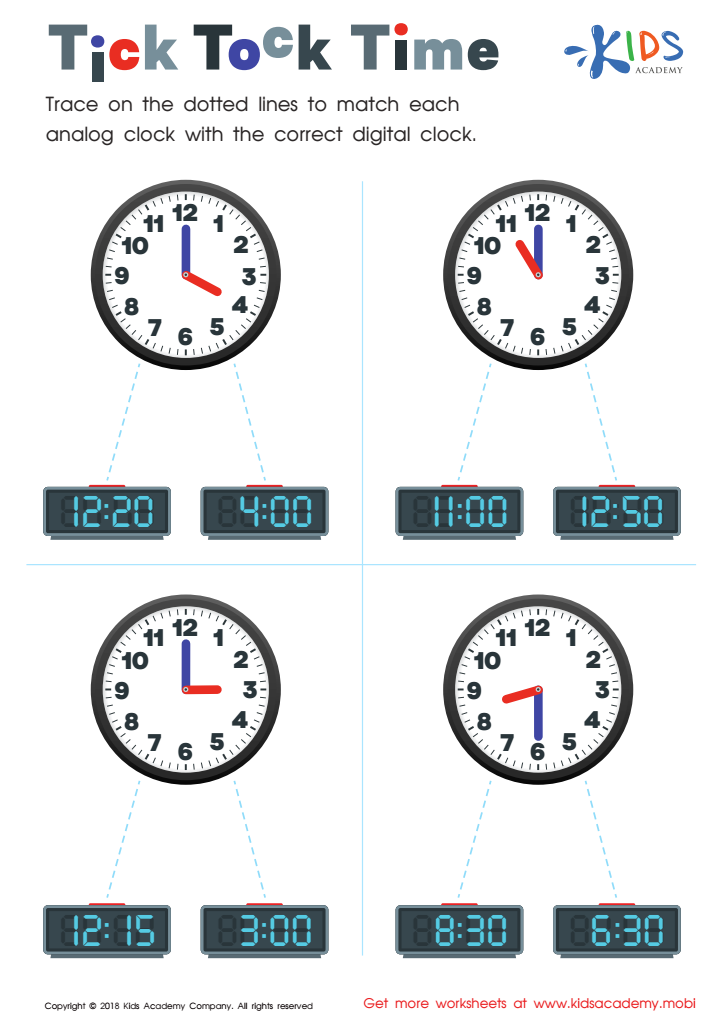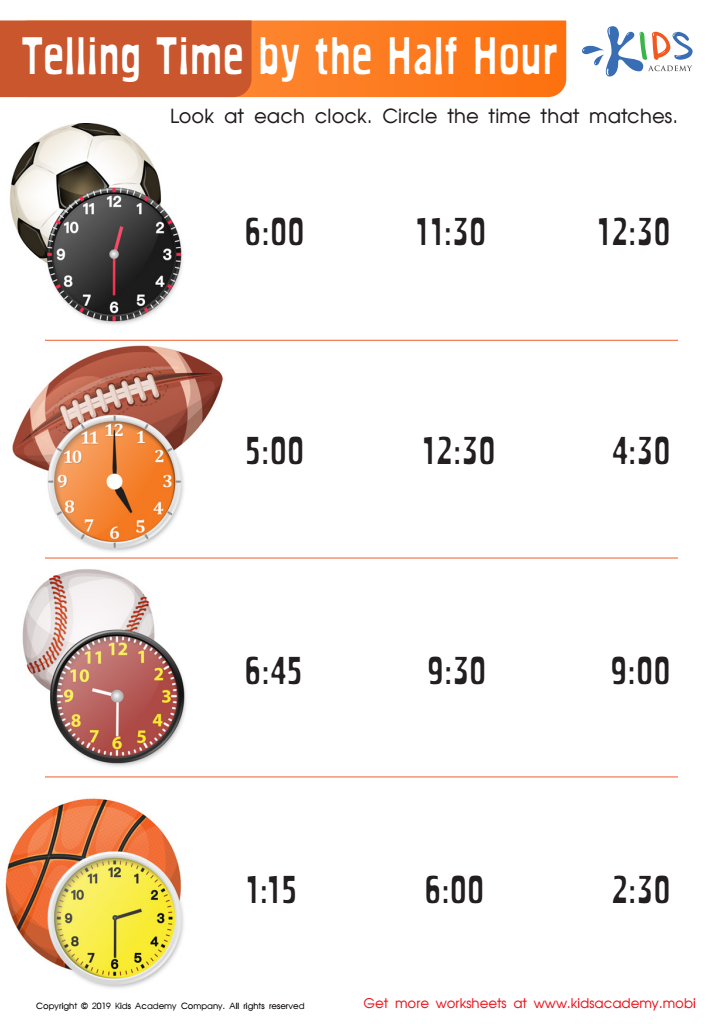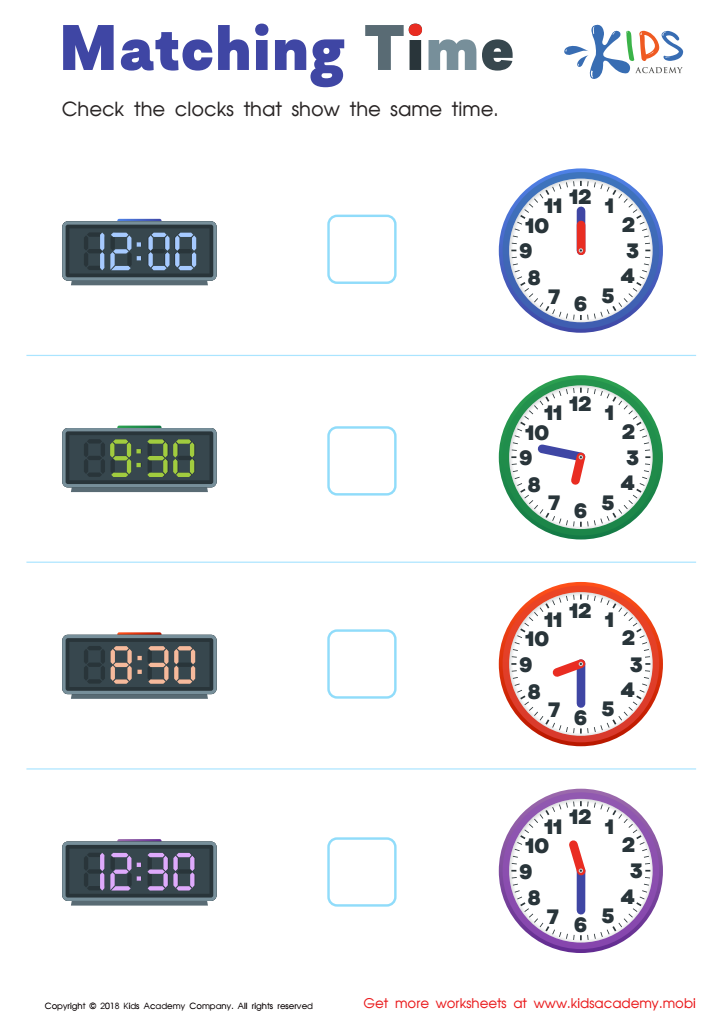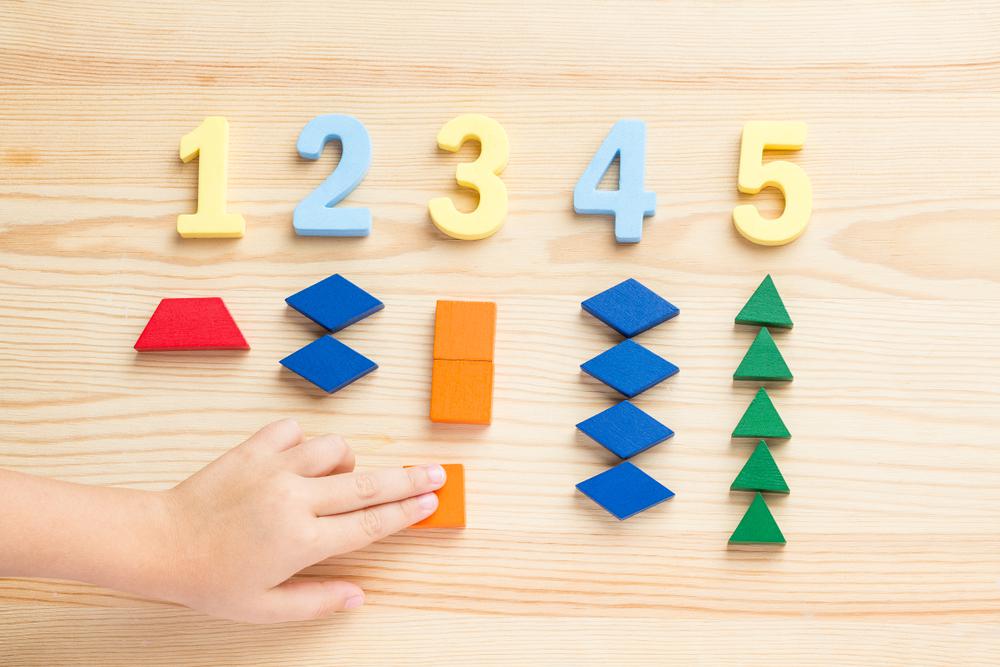Time recognition Worksheets for Ages 5-6
3 filtered results
-
From - To
Unlock the magic of time-telling with our Time Recognition Worksheets for Ages 5-6! These engaging, colorful worksheets aim to make learning fun and interactive for young learners. Perfectly designed for kindergarteners and first graders, they will help your child master the concepts of hours and minutes using both analog and digital clocks. Develop essential skills in a playful manner with delightful exercises that include clock face reading, matching games, and simple time-telling tasks. Set your child up for success in their educational journey by making time both a fun and fundamental part of their daily learning routine!


Tick Tock Time Worksheet


Telling Time by the Half Hour Worksheet


Matching Time Worksheet
Time recognition is a critical skill for young children, particularly those aged 5-6, as it lays the foundation for a range of essential life skills. For one, understanding time helps children develop a sense of structure and routine. Kids in this age group are transitioning into more formal learning environments where schedules play a significant role. Recognizing time assists them in understanding when it's time to start and stop activities, fostering both independence and responsibility.
Additionally, time recognition is closely linked with the development of mathematical skills, specifically concepts related to numbers, sequences, and durations. As children learn to read clocks and understand parts of the day, they're also engaging in tasks that enhance their cognitive abilities, such as interpreting symbols and patterns.
Knowing how to tell time also aids in personal development. It helps children grasp abstract concepts such as “before,” “after,” “soon,” and “later,” improving their planning and organizational skills. Moreover, it boosts their self-confidence and independence as they can predict and understand daily events, which provides a sense of security and control over their environment.
Parents and teachers can support time recognition through interactive play, real-life applications, and consistent reinforcement, thereby equipping children with skills that are fundamental to academic success and everyday life.
 Assign to My Students
Assign to My Students





















